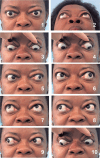Photodocumentation in oculoplastic surgery: an up-to-date overview
- PMID: 36228239
- PMCID: PMC11826790
- DOI: 10.5935/0004-2749.2021-0318
Photodocumentation in oculoplastic surgery: an up-to-date overview
Conflict of interest statement
Figures









References
-
- Yavuzer R, Smirnes S, Jackson IT. Guidelines for standard photography in plastic surgery. Ann Plast Surg. 2001;46(3):293–300. - PubMed
-
- Zarem HA. Standards of photography. Plast Reconstr Surg. 1984;74(1):137–146. - PubMed
-
- Neff LL, Humphrey CD, Kriet JD. Setting up a medical portrait studio. Facial Plast Surg Clin North Am. 2010;18(2):231–236. - PubMed
-
- Ong CT, Kalantzis G, Yap JF, Chang B. Standardized photographic views in oculoplastic surgery: how to capture quality images outside a photographic studio. [cited 2021 nov 24];Cureus. 2016 8(4):e569. [Internet] Available from: Standardized Photographic Views in Oculoplastic Surgery: How to Capture Quality Images Outside a Photographic Studio - PMC (nih.gov) - PMC - PubMed
Publication types
MeSH terms
LinkOut - more resources
Full Text Sources
Medical

